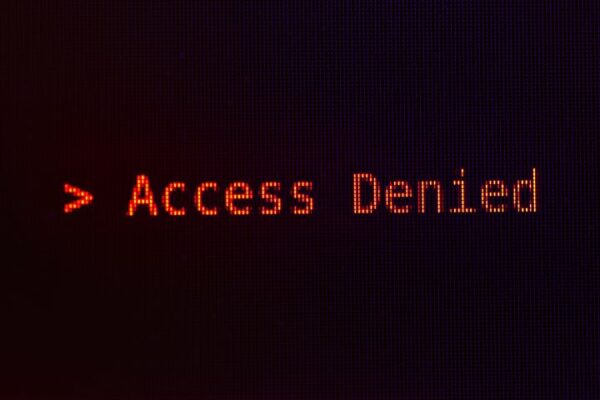The Hidden Vulnerability in Most Organisations’ Marketing Strategies
Imagine this scenario. Your organisation has spent three years building visibility, credibility, and relationships through LinkedIn. It’s become your main stage for showcasing expertise, sharing impact stories, and reaching new clients or supporters. Your content regularly generates meaningful engagement, your network has grown to include key decision-makers, and roughly 60% of your new business conversations now start there.
Then, one Tuesday morning, you log in and… nothing. Your account has been suspended. The reasons are unclear, the appeals process is automated, and your access to your network and your pipeline has vanished overnight.
This isn’t a hypothetical nightmare. It’s happening to organisations across the UK, from established professional services firms to growing charities, and the frequency is increasing as platforms tighten their automated moderation systems.
This is the risk of building your brand on “rented land” – and it’s a vulnerability that most purpose-led organisations haven’t adequately considered.
The Illusion of Digital Ownership
Platforms like LinkedIn, Facebook, Instagram, and X can feel like they belong to you. You’ve invested time, energy, and often budget into growing followers, crafting content, and nurturing conversations there. Your team checks analytics daily. Your board asks about follower counts. These spaces feel integral to your identity.
But here’s what many organisations forget: these platforms are not yours. They’re owned by corporations that can change the rules, tweak the algorithms, or shut off access entirely, without warning or meaningful recourse.
When you build primarily on social platforms, you don’t control:
- Visibility: Algorithm changes can cut your organic reach by 80% overnight (as Facebook demonstrated in 2018)
- Access: Automated moderation errors happen daily, with appeals taking weeks or months
- Longevity: Platform relevance shifts rapidly (remember when everyone was on Facebook?)
- Rules: Terms of service changes can retroactively make your content non-compliant
The Professional Services Vulnerability
For purpose-led professional services – whether you’re a consultancy, law firm, or financial advisory firm with strong values – your brand depends on trust, relationships, and consistent visibility. Over-reliance on one platform creates several critical risks:
Pipeline disruption becomes a genuine business threat. Suppose LinkedIn generates 60% of your new client conversations and that channel disappears. In that case, you’re not just losing visibility – you’re facing potential revenue loss that could impact your ability to deliver on your mission.
Brand continuity suffers when your voice suddenly vanishes from the professional networks where your reputation has been built. Clients and prospects may interpret this absence as instability, particularly if they’re unaware of the platform issue.
Competitive disadvantage arises when competitors maintain visibility, while you’re struggling to appeal to the platform. In professional services, consistent presence often translates to “top of mind” status when opportunities arise.
The Third Sector’s Unique Exposure
For charities, social enterprises, and not-for-profits, the stakes are different but equally profound. Your mission depends on engagement, storytelling, and community mobilisation. Single-channel dependence can create:
Mission drift through reduced influence. When your voice disappears from the channels where policy discussions happen, your ability to advocate for change diminishes precisely when consistency matters most.
Supporter disconnection that goes beyond follower counts. Your stories can’t reach the people who care, volunteer opportunities go unfilled, and the community you’ve built around your cause fragments.
Fundraising vulnerability becomes critical when campaigns lose momentum due to visibility gaps. For organisations operating on tight margins, even short-term communication disruption can have a lasting financial impact.
Stakeholder confidence issues can emerge when trustees, funders, or partners notice your reduced presence without understanding the cause.
The Psychology of Platform Dependence
Why do intelligent organisations fall into this trap? The answer lies in understanding how digital marketing has evolved.
Ease of entry makes platforms irresistible. Setting up a LinkedIn company page takes minutes. Building a website with proper SEO, email systems, and content strategy takes months. The path of least resistance leads most organisations toward platform-first strategies.
Instant gratification from likes, shares, and comments creates what behavioural economists call “variable reward conditioning.” The unpredictable nature of social media engagement triggers the same psychological responses as gambling, making platform activity genuinely addictive for marketing teams.
Apparent cost-effectiveness masks the actual investment. “Free” platforms aren’t free – they require significant time investment, and their value depends entirely on continued access that you cannot guarantee.
Network effects create the illusion of necessity. When your peers, clients, and supporters are active on a platform, leaving feels impossible. But this shared vulnerability means entire sectors can experience simultaneous disruption.
The Strategic Response: Beyond Platform Diversification
Think of your marketing strategy like an investment portfolio. A wise investor doesn’t put 100% of their assets in one stock, regardless of how well it’s performing. Similarly, a resilient organisation doesn’t put 100% of its audience engagement in one platform.
But simply “being on more platforms” isn’t the answer. That approach often leads to diluted effort, inconsistent messaging, and team burnout. What’s needed is a strategic framework that diagnoses your actual vulnerabilities first, then orchestrates the right mix of channels based on your unique circumstances.
The Multi-Channel Architecture
Through our work with purpose-led organisations, we’ve developed a diagnostic framework that categorises marketing channels into four strategic types, each serving different functions in building resilience:
Owned Assets – channels you control completely, forming your foundation.
Earned Presence – credibility built through third-party validation
Strategic Investment – paid channels that amplify your owned content. Platform Participation – social media used tactically, not strategically
The key insight? Most organisations get this hierarchy backwards. They prioritise platform participation and treat owned assets as an afterthought. It is vital to work out which channels actually serve your mission most effectively, then build a sustainable architecture around those insights.
Content Strategy That Builds Independence
The most resilient organisations don’t just diversify where they post – they fundamentally restructure how they create content. This requires moving from a platform-first to an audience-first approach, ensuring every piece of content serves your mission regardless of where it appears.
Moving From Vulnerability to Resilience
How Vulnerable are you?
How do you know if your organisation is building on rented land? We use a comprehensive diagnostic framework with our clients, but here are some key warning signs:
- Does any single platform generate more than 40% of your new business or supporter acquisition?
- Could you reach your core audience effectively if your primary social platform disappeared tomorrow?
- Do you have direct contact details for less than 25% of your social media followers?
- Has your team created valuable content that only exists on social platforms?
- Would losing access to one platform significantly impact your ability to deliver on your mission?
If you’re recognising these patterns, you’re not alone. Most purpose-led organisations have grown into this vulnerability without realising it. The good news? Once diagnosed, it’s entirely fixable with the right strategic approach.
The Path Forward
Whether you’re a purpose-led consultancy advising multinational clients or a community charity making a local impact, your work is too important to risk on an algorithm’s whim.
You wouldn’t build your physical offices on land you could be evicted from at any time. You wouldn’t store your client files in someone else’s filing cabinet without backup copies. So why build your marketing presence that way?
The organisations that thrive in the next decade won’t be those with the most followers on any single platform. They’ll be those with the most resilient, diversified, and strategically distributed presence across multiple channels – with owned channels forming the foundation that no external force can shake.
The question isn’t whether platform disruptions will happen. The question is whether your organisation will be ready when they do.
Ready to understand what your organisation needs to build resilient, multi-channel marketing that serves your mission? Let’s start with an honest conversation about your current vulnerabilities and practical steps toward platform independence.






